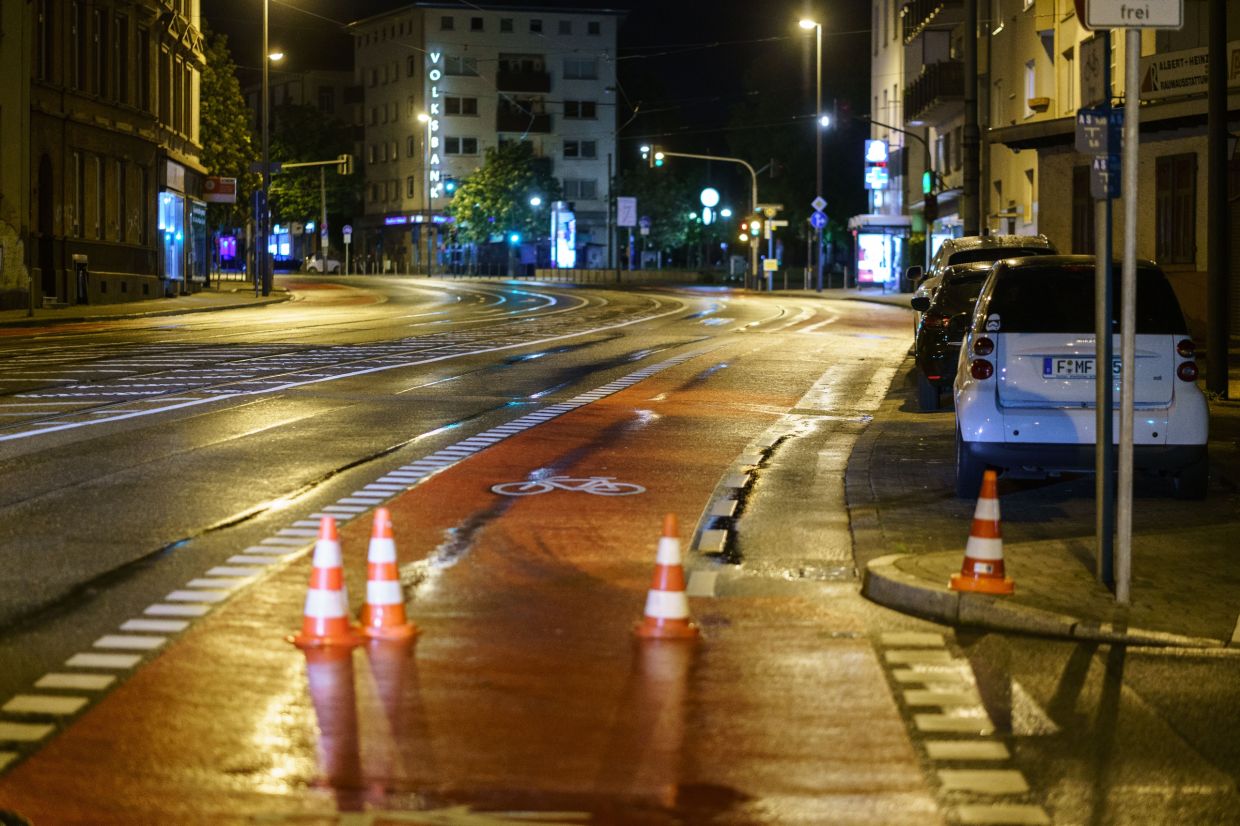Michael Hilgers and Marcel Biewald, a bomb disposal team with unexploded ordnance. Photo: David Young/dpa
Every two weeks on average, a dormant World War II bomb is reported to the Explosive Ordnance Disposal (EOD) service in the German city of Darmstadt. When a call comes, staff move fast.
First, a team of disposal experts takes a closer look at the bomb – how big is it and what condition is it in? Most importantly, what does the detonator located in the nose of the projectile look like?
"That was a problem last year, for example, when a large bomb was found in Frankfurt," says Alexander Majunke, who heads the south-central German state of Hessen.
The 500kg United States aviation bomb was encrusted with dirt and had to be carefully cleaned before his team could get a good look at the detonator.
That was not the only thing that made the mission so memorable for Majunke, who had taken over his duties as EOD head just three months earlier. The impact of the discovery of the device containing 145kg of explosive was huge.
Because it was located in the densely populated inner city area, police evacuated a radius of one kilometre. About 20,000 people had to leave their homes, including the residents of two elderly care homes, while a large number of Covid-19 patients had to be isolated elsewhere.
With 500 tonnes of sand and 46,000 litres of water on standby in case of a controlled detonation, Majunke and a colleague set about defusing the detonator. If that had not worked, the bomb would have had to have been deliberately set off using an explosive charge.
Fortunately it could be made safe, recalls Majunke, whose authority had to deal with 24 bombs last year.
"I wasn't afraid, but always approach these with respect," he says, sitting in an office decorated with the kind of ornaments you might expect of someone in this line of work.
To the right of the door are some small bombs, behind them a bright red sign with the black inscription "Explosive", and then some ammunition and grenades on the shelf – all harmless, of course.
Dealing with giant bombs is not something you choose to do on a whim. Majunke had already worked with explosives during his service in the German armed forces and wanted to stick with his profession, so he joined the civilian EOD service.
In 2006, he defused his first bomb in another part of Germany, which is still littered with the war's buried remnants.Between 1940 and 1945, US and British planes dropped 2.7 million tonnes of bombs on Europe, half of them on Germany, shattering much of its industry and infrastructure and laying waste to dozens of cities.
Estimates suggest that up to 30% of the bombs did not explode. Eight decades later, they still turn up during construction work, and about 1,300 tonnes of explosive ordnance are unearthed every year.
The fact that they have been in the ground this long makes the disposal work all the more risky. The explosives may be highly unstable and corrosion also takes a toll, making disarming work particularly difficult if the detonator can't be identified.
Self-detonations are extremely rare, but possible. In the summer of 2019, for example, an aviation bomb found four metres deep in a field near Limburg went off. It tore a huge hole in the ground, but no one was injured.
The defusing work usually ends smoothly, but it's by no means guaranteed.
"In 1990, the then head of the explosive ordnance disposal service and his deputy were killed while trying to defuse an aviation bomb," says Majunke.He concentrates hard during defusing operations, he says, and feels like he is in a tunnel.
"I only realise how tense it is when everything is over."Fortunately, though, it's not always a matter of defusing bombs. He also devotes lot of time to evaluating aerial photographs, for example.
This is because there are more and more enquiries from building owners who want to know whether dangerous wartime relics are lurking on their property.
Photos can reveal ground discolouration and other signs of buried devices. Private explosive ordnance disposal services can then come and search the area. – dpa




